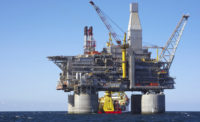What’s it like running a large global trade show?
A Q&A with A+A’s first-time director on how it went

Photo credit: Benita Mehta
During a successful A+A Trade Fair and Conference at the end of October in Dusseldorf, Germany, ISHN sat down in person with first-time Director Lars Wismer to get his thoughts on the event, which featured 2,200 exhibitors from 58 countries. The exhibitors spanned 12 halls with about 62,000 trade visitors from 140 countries attending the event. There was also a dedicated hall just for companies from the United States and Canada. The following is the edited conversation.
Q: What did you expect going into this show as it was your first one? Have your expectations been met?
A: The expectations have definitely been exceeded. I’m totally overwhelmed by not only the range of products and the sheer number of exhibitors and visitors, but also on how great and creative [the industry] is. What I really enjoy is that it’s a hands-on show so you can touch and feel, and try on things.
Q: How does this event compare to the trade shows in the U.S.?
A: The Exo Park really impressed me as I was able to wear an exoskeleton for the first time. At the US shows I’ve been to, there were many one or two exoskeleton companies, but not this many, so that was interesting. [Exoskeletons] haven’t always been as common in the U.S. until recently. I think it’s still in the experimental phase, and I think even for some of the world’s largest companies, such as Amazon, and smaller businesses, carpenters, for example, it’s still sci-fi, but it’s getting there.
Q: What do you think has been working really well and what was new this year?
A: We had a new hall layout this year for the first time. It’s the 38th edition [of the Trade Fair], and it has been growing every year. Previously, the themes, topics and products were mixed throughout, so now we have a clear organization set up for the visitors so it’s easier for them to their way around and find the topics and exhibitors they are looking for. (Note: This year’s Trade Fair had been organized by type of product and company, so all the fire protection companies were in the same hall, the healthcare companies, and so on.)
That was definitely a challenge because it took a lot of time and effort to explain the concept but it worked really, really well. We were really proud of that, and have had a lot of positive feedback from the exhibitors. Initially, they didn’t know if it was a good idea. Obviously, we're going to do that again next year because we think it works pretty well.
Q: What have you learned from this show going forward to 2025 (the A+A Trade Fair is held every other year)?
A: Looking ahead to 2025, we have a lot of topics besides our main pillar, PPE, such as ergonomics and exoskeletons. The separation or clustering of components has been very important. We want to expand the corporate-wear areas, and also the areas of accident and risk prevention. There's a lot of potential in various fields and we'd like to see what went well this year and what the demand is from the visitor side, and try to develop these side topics. The industry and everything around it is constantly developing and we have so many new things, I think it's important for us to try to integrate them into the show.
Q: The theme this year was digitalization and sustainability. Where did that come about and why?
A: These are definitely the big topics right now not only for Occupational Safety and Health, but for basically every industry. We have a lot of companies that are already doing a lot in terms of sustainability, using products or creating products from recycled materials. Also, decarbonization is a big topic in Europe. Companies have to report their carbon dioxide footprint, depending on their size. This is already a thing or will be in the next couple of years. So, if you buy, let's say, equipment, like gloves or something, they are going to play into your carbon footprint.
This is definitely a topic for everybody that is becoming more and more important, and I protecting workers and protecting the environment goes basically hand in hand.
And of course, digitalization is in so many areas, such as integration of artificial intelligence. Everything's getting more digital in terms of handling PPE equipment, such as giving it out, getting it back, getting it cleaned. We’re also seeing systems that can detect or prevent accidents. So this is becoming more and more important in all areas of Occupational Safety and Health.
Q: How do you think are you planning to try to attract more Americans to attend or exhibit?
A: We think of A+A as a very international show, and we want to not only keep it this way, but also expand. The U.S. is a very, very important and large market. We would be happy to attract more visitors from the U.S. so we definitely have a focus on communication and marketing planned. I understand it’s a long way to travel, but obviously I think it’s worthwhile.
See more of ISHN’s A+A coverage here.
Looking for a reprint of this article?
From high-res PDFs to custom plaques, order your copy today!








